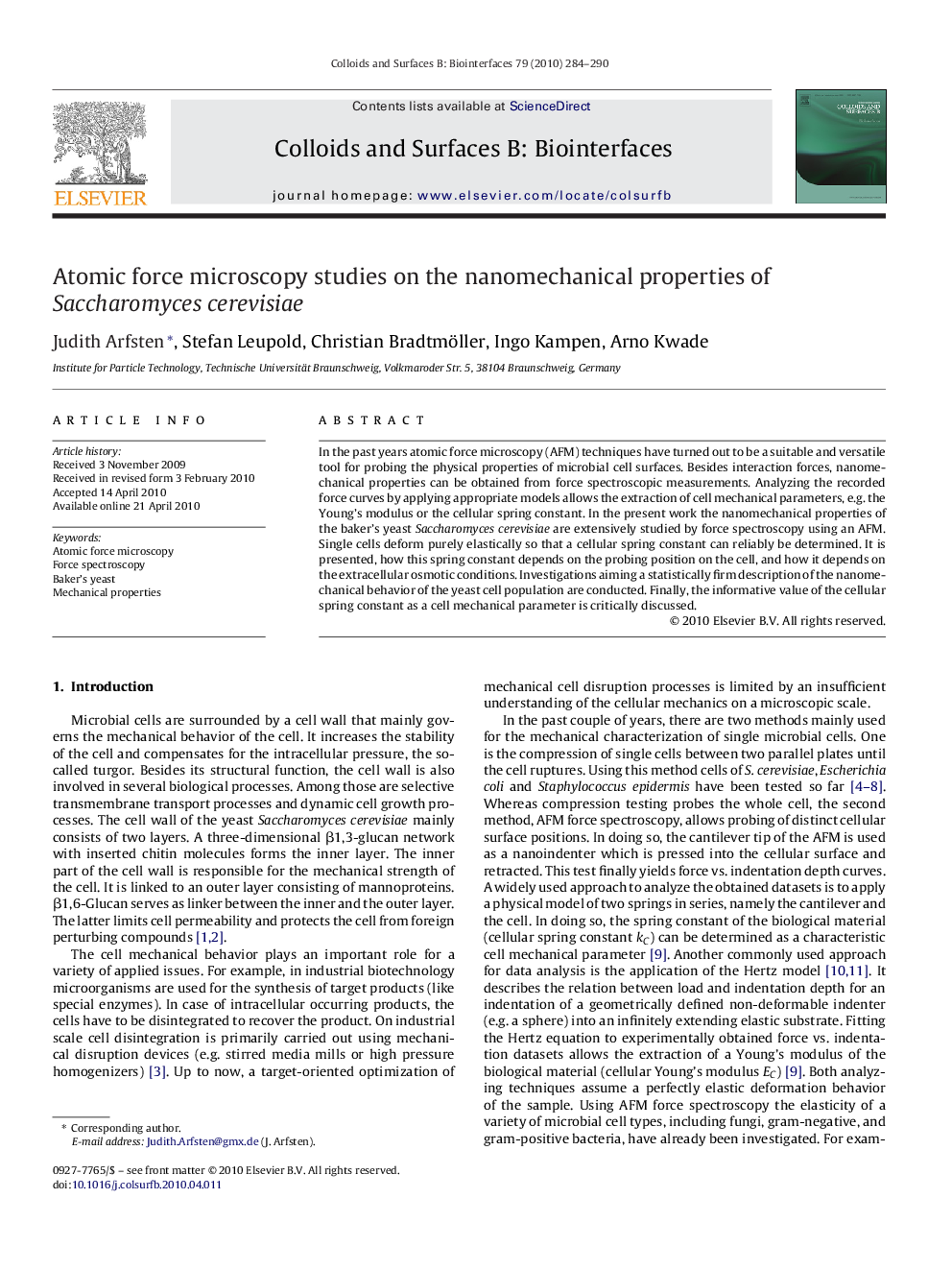| Article ID | Journal | Published Year | Pages | File Type |
|---|---|---|---|---|
| 601568 | Colloids and Surfaces B: Biointerfaces | 2010 | 7 Pages |
In the past years atomic force microscopy (AFM) techniques have turned out to be a suitable and versatile tool for probing the physical properties of microbial cell surfaces. Besides interaction forces, nanomechanical properties can be obtained from force spectroscopic measurements. Analyzing the recorded force curves by applying appropriate models allows the extraction of cell mechanical parameters, e.g. the Young's modulus or the cellular spring constant. In the present work the nanomechanical properties of the baker's yeast Saccharomyces cerevisiae are extensively studied by force spectroscopy using an AFM. Single cells deform purely elastically so that a cellular spring constant can reliably be determined. It is presented, how this spring constant depends on the probing position on the cell, and how it depends on the extracellular osmotic conditions. Investigations aiming a statistically firm description of the nanomechanical behavior of the yeast cell population are conducted. Finally, the informative value of the cellular spring constant as a cell mechanical parameter is critically discussed.
